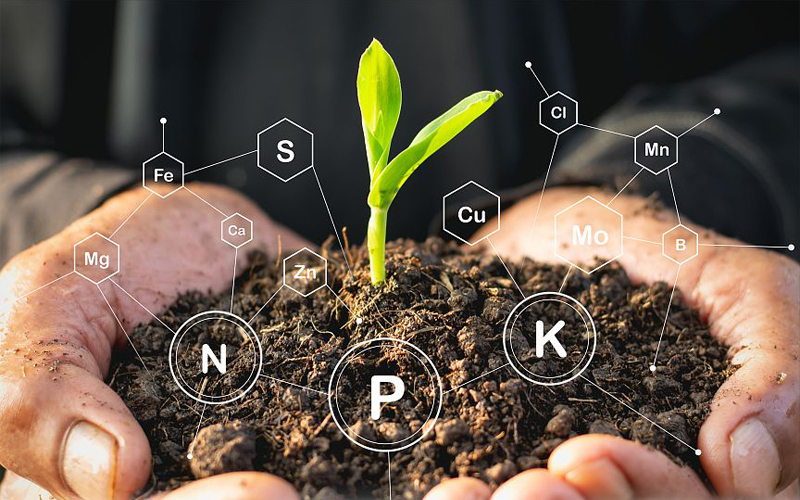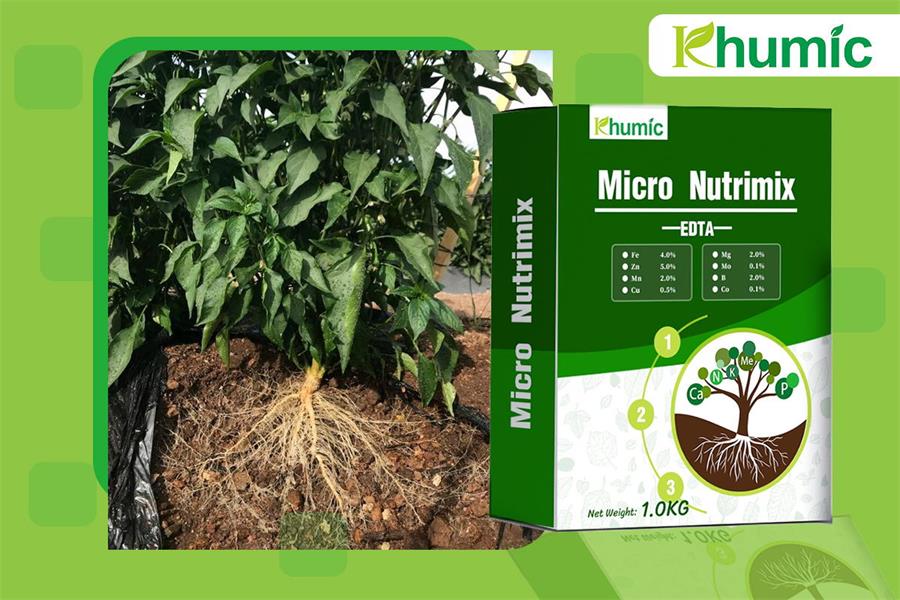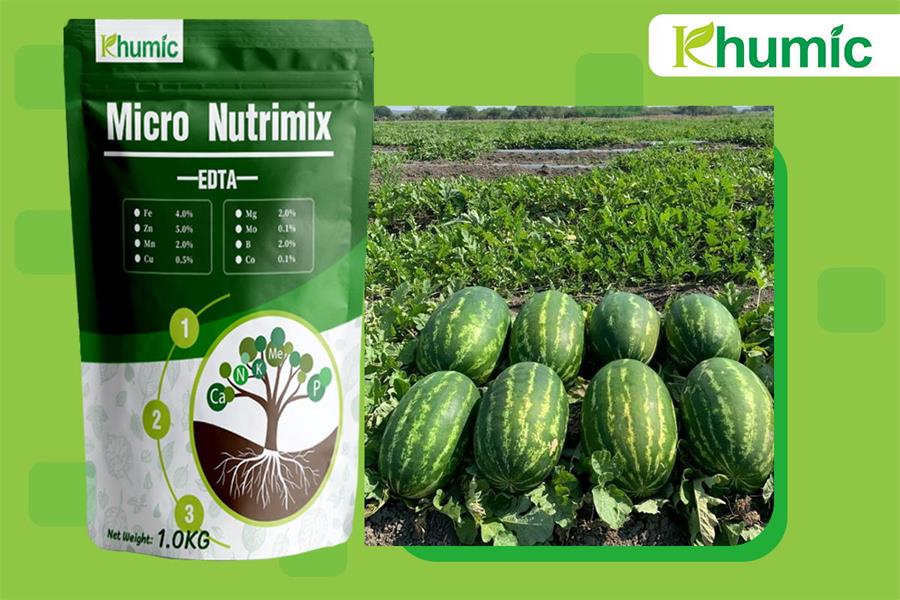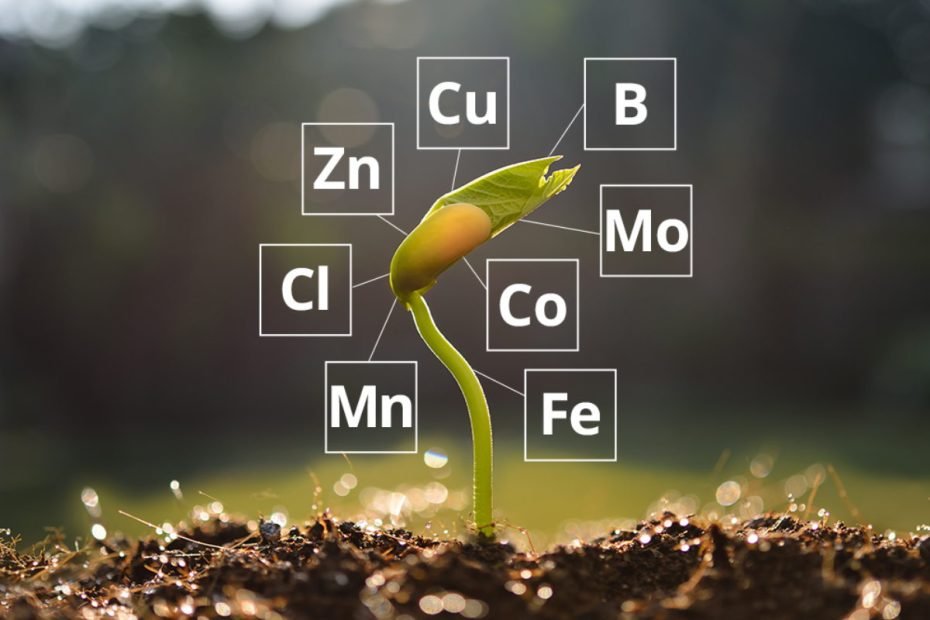Introduction
Plants need a constant supply of additional nutrients to thrive. While macronutrients such as nitrogen, phosphorus, and potassium often get the spotlight, micronutrients play a vital role in plant growth and development. However, these plant micronutrients make up less than 1% of the dry weight of the plant. To learn more about micronutrients and their functions, we’ll take a deep dive into the world of micronutrients for plants.
Table of Contents
What are Micronutrients for Plants?
Micronutrients, also known as trace elements, are essential nutrients that plants need in small amounts for various physiological functions. These micronutrients include iron, manganese, zinc, copper, boron, molybdenum, and chlorine. Although micronutrients are required in smaller quantities than macronutrients, they are just as important for plant growth, enzyme activation, photosynthesis, and overall nutrient absorption. A deficiency in any one nutrient can lead to reduced productivity.

Micronutrients for Plants Functions and Deficiency Effects

Boron
Important for cell wall formation, pollen tube growth, sugar and starch content. Required for pollen germination, membrane function, cell differentiation, involved in carbohydrate transport, nucleic acid synthesis, hormone metabolism, and fat metabolism.
When the soil boron content is less than 0.1 pounds per acre, the boron content is low or insufficient. The calcium, potassium, or nitrogen content in the soil will also affect the boron content. And boron is easily lost from the soil surface.
Boron fertilizers are recommended for alfalfa, apples, broccoli, cotton, root crops, peanuts, cabbage, and cauliflower.
Signs of Boron Deficiency:
- Yellowing of leaves, especially young leaves. Death of the main growing point (terminal bud).
- White-yellow spots may appear at the base of the leaves.
- Dark brown irregular spots may appear on leaves.
- Leaves and stems may become brittle and twisted due to problems with cell wall growth.
- Leaf tips may become thick and curled, or highly branched.
- Infected plants grow slowly and appear smaller.
- Flower buds may not form properly, or be oddly shaped.
- Seed quality and pollination are poor.
Iron
Iron is the trace element that plants require in the largest amounts. It helps maintain the physical structure of chloroplasts and is essential for the production of chlorophyll in photosynthesis.
Plant iron deficiency is not usually caused by a lack of iron in the soil, but rather by factors in the soil that make iron unavailable to the plant, such as high temperatures, prolonged periods of high soil moisture, high soil pH, low soil oxygen levels due to soil compaction or waterlogging, and low soil oxygen levels.
Iron fertilizers are recommended for rhododendrons, gardenias, camellias, philodendrons, hydrangeas, citrus trees, and roses, as well as several Australian native plants.
Signs of Iron Deficiency:
- Young leaves and veins lose their green color, and the entire leaf gradually turns white.
- Leaves have a yellowish tint between the veins.
- In young leaves, there is a clear demarcation between green veins and yellow areas.
- Growth is slowed.
- Fields deficient in iron will have irregular yellow patches.
Zinc
Involved in enzyme activation and hormone synthesis. Essential for hormone regulation, protein synthesis, and carbohydrate metabolism, ensuring proper plant development. It is an important fertilizer for producing edible beans, corn, and sweet corn.
Soil zinc levels are “deficient” or “low” when extractable zinc levels are less than 2.0 pounds per acre and soil pH is less than 6.1. Zinc deficiencies can occur in early-planted corn during cool, wet seasons
Zinc fertilizers are recommended for peach, plum, nectarine, and peanut trees.
Symptoms of zinc deficiency:
- Leaves will have a yellowish tint between veins. Stripes from edge to center.
- Patches of different colors may be seen, such as light green, yellow, or white.
- Severe cases can cause leaves to turn from off-white to yellow and may fall off or die early.
- Leaves are deformed or disordered, and plants are stunted.
- Flowers and seeds do not develop properly.
- Wheat and similar plants have fewer lateral branches.
Copper
Assists in photosynthesis, respiration, and protein metabolism. Enzymes are involved in redox reactions. Essential for electronic transport. Facilitates electron transfer in photosynthesis, and aids in lignin formation and plant structural integrity.
Copper deficiency is common in organic soils, mineral soils with high organic matter (>5%), and sandy soils that are over-limited and have a high pH (>6.0 or 6.5, depending on soil type).
Copper fertilizers are recommended for onions, beets, spinach, lettuce, tomatoes, and sunflowers.
Signs of Copper Deficiency:
- Causes diseases such as ergot (ergot causes grain loss).
- Young leaves turn yellow with chlorosis, which may contain necrotic spots
- Plants are stunted and leaves fall off prematurely.
- Cereal crops take longer to mature.
- Plants may bend or fall over.
- Bark oozes gum, causing rash spots on the bark
- Brown discoloration (also called melanosis) may occur.
- Wheat kernel yield and grain filling may be low, and kernels may sometimes be hollow.
Manganese
Essential for nitrogen metabolism and activation of many enzymes of the TCA cycle. Involved in photosynthesis to release oxygen, nitrogen metabolism, and root development. Promotes root growth and nutrient uptake.
When extractable manganese levels are less than 4.0 pounds per acre (soil pH < 5.6), you know it is time to add manganese to the soil
Manganese fertilizers are recommended for soybeans, peanuts, small grains, oats, wheat, cotton, onions, cucurbits, peas, beans, and radishes.
Symptoms of manganese deficiency:
- Interveinal chlorosis on young leaves.
- Gray spot on oats, a bog spot on peas, white streaks on wheat, and a brown spot on barley.
- Chlorosis associated with necrotic spots on leaves
Molybdenum
Helps with the nitrogen cycle within plants, synthesizing nitrate reductase. Helps legume rhizobia fix atmospheric nitrogen. Promotes potassium uptake by plants.
Generally, if the soil pH is above 6.0, molybdenum deficiency is unlikely to occur. However, your plants are more likely to show symptoms when the pH is below 6. Molybdenum should never be applied to non-legumes.
Molybdenum is recommended for alfalfa, clover, peas, and beans.
Symptoms of molybdenum deficiency:
- Slightly retarded growth
- Cabbage whiptail
- Citrus yellow spot
- Premature flower drop
- Leaves that curl, burn, or curl and are also lighter in color
- Thick, brittle leaves that eventually wilt, leaving only the midrib
Chlorine
Involved in photosynthesis, osmotic regulation, ion balance, and nutrient transport within plants. It helps assist the functioning of stomata to regulate gases, oxygen utilization during photosynthesis, and cell division in leaves and roots. In addition, chlorine makes plants resistant to stress and disease, and the quality of the crop will improve.
Chlorine fertilizers are recommended for tobacco, potatoes, and tomatoes.
Signs of chlorine deficiency:
- The plant has yellow and blight spots on its leaves.
- The boundary between the blight spots and the healthy part of the leaf is visible.
- The edges of the leaves may also begin to droop.
- The root growth is stunted and may become very branched. (Often seen in cereal crops such as wheat or barley)
The Best Way to Get Micronutrients for Plants
Ensuring that plants get an adequate supply of micronutrients is essential for healthy growth. The best way to provide plants with micronutrients is to accurately assess nutrient levels through soil testing. Based on the results, you can choose to apply micronutrient-rich fertilizers, foliar sprays, or amendments to correct any deficiencies.
Foliar fertilization is considered to be the most effective way to add micronutrients to plants that need them. In this way, plants can absorb nutrients immediately through their leaves and roots.
Seaweed fertilizer or EDTA Micro Nutrimix is mainly used to prepare micronutrient fertilizers. Micro Nutrimix is a trace element mixture that 100% chelates trace elements such as iron, calcium, manganese, zinc, copper, and boron. It can still be quickly absorbed in a neutral, slightly acidic environment (pH 4-6.5). It can be mixed with other fertilizers or used alone for foliar fertilization or drip irrigation. If you have any questions about micronutrient fertilizers, please contact our experts. Customized formulations can be made according to customer requirements.


FAQs
How do I know if my plants are deficient in micronutrients?
Symptoms of micronutrient deficiency in plants vary depending on the specific nutrient that is deficient. Common symptoms include yellowing or browning of leaves, stunted growth, and reduced flowering or fruiting.
Can plants absorb micronutrients through their leaves?
Yes, plants can absorb micronutrients through foliar sprays, especially in cases of severe deficiency.
Is it possible to overdose plants with micronutrients?
Overdosing micronutrients can lead to toxicity, causing damage to the plant and disrupting nutrient balance.
Can micronutrient deficiencies in plants be corrected?
Yes, plant micronutrient deficiencies can usually be corrected with proper soil amendments, fertilization, and foliar sprays. Regular monitoring and adjustments can help maintain optimal nutrient levels for healthy plant growth.
Do all plants need micronutrient supplements?
No, although micronutrients are essential for all plant types, including vegetables, fruits, flowers, and ornamentals. However, specific needs may vary depending on the plant species and soil conditions.
